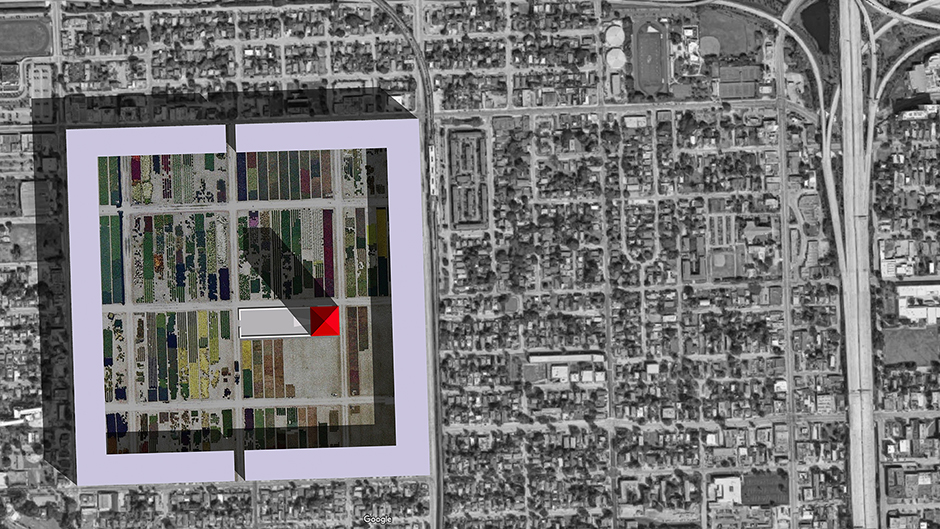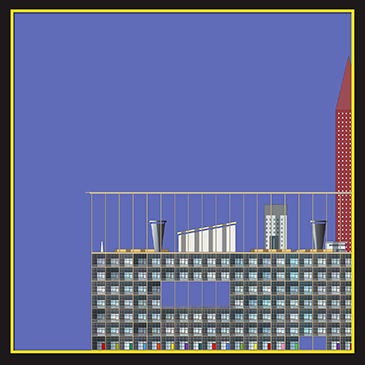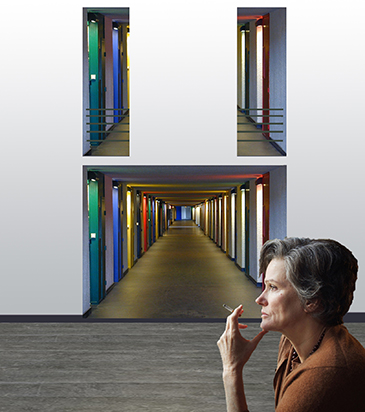AERIAL VIEW IN CONTEXT | POST-DIGITAL HOUSING 1/5
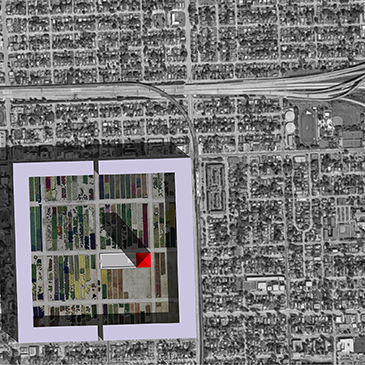
This housing project is a foundational counter-proposal to the functional distribution and land use conditions of the contemporary city and yet it is inspired by the Unité D’habitation de Marseille, a modernist housing project designed by Le Corbusier, as well as by the philosophical work of Hannah Arendt and her abhorrence of a lonely, competitive, and rootless human condition characterized by what she called “a society of jobholders” – one which is focused on useless material gains at the expense of greater states of human consciousness and higher intellectual achievements. This neighborhood project, located in the City of Miami, occupies one quarter of a mile square along the Allapattah Metrorail Station. Its simple shape is a reminder of the neighborhood unit implied in Thomas Jefferson’s Land Survey of 1785 and its relentless expression on the American territory. The project is composed of a peripheral apartment building with civic institutions and public spaces allocated in terraces and roof gardens; a vertical farming skyscraper at its center is flanked by a small plaza and surrounded by long plots of agriculture. The quarter mile square project contains everything needed for human daily living at walking distance, including food production © Jaime Correa, 2018
AERIAL VIEW DETAIL | POST-DIGITAL HOUSING 2/5
The square shape of this neighborhood project, located in the City of Miami, follows the idea of the “neighborhood unit” implied in Thomas Jefferson’s Land Survey of 1785. The project contains a peripheral apartment building with civic institutions and public spaces allocated in terraces and roof gardens; a vertical farming skyscraper at its center is flanked by a small plaza and surrounded by long plots of agriculture. This quarter mile square project contains everything needed for human daily living at walking distance, including food production © Jaime Correa, 2018
FAÇADE | POST-DIGITAL HOUSING 3/5
Inspired by Corbusier’s Unité D’habitation de Marseille and Hannah Arendt’s repulsion of a “society of jobholders”, the square mile long apartment building acts as a counterproposal to the contemporary urban design status-quo; the transfiguration of a mathematical square into an apartment building of colossal dimensions, containing civic and domestic functions, as well as food production within its three-dimensional boundaries, produces a new approach for the recovery of an autonomous post-digital architectural complex. This is essentially a collective project with social healing powers; a project that denies the nostalgic post-modern conditions which have paved the way to three of the most pressingpolitical problems of the new millennium: authoritarianism, totalitarianism, and tribalism © Jaime Correa, 2018
ROOF GARDEN | POST-DIGITAL HOUSING 4/5
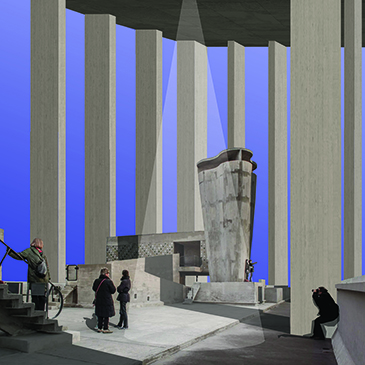
This is not just another modernist roof garden; in fact, it is not a garden at all. This is a real, active, and natural space for the collective participation in the civic life of the community – a true expression of the Greek Polis and a new kind of minimal space for the practice of voluntary simplicity. Although it preserves, in living space, some of the historic and formal characteristics of the Unité D’habitation, this covered terrace is a transformative space with autonomous expectations for a better future. It provides a multiplicity of civic functions as well as transformative spaces catering the needs of the soul for introspection and careful thought – moral and ethical obligations that the contemporary capitalist city has alienated from its functional discourse © Jaime Correa, 2018
PUBLIC TERRACE | POST-DIGITAL HOUSING 5/5
While Hannah Arendt smokes a cigarette in one of the public terraces of the mile square apartment building, its multi-color corridors remind us of those at the Unité D’Habitation de Marseille by Le Corbusier. This composite image is a simple reflection on our metaphysical understanding that the soul has different needs at different times and that it may also have contradictory needs at the same time. Human beings need to feel useful and, at the same, indispensable. Nevertheless, the current conditions of post-modern alienation make all kinds of civic and political decisions a tiring endeavor. As a result, in the new millennium, humans seem to be delegating their political rights to post-modern icons at the expense of the world at large. This is a time for a new foundational call to order © Jaime Correa, 2018
